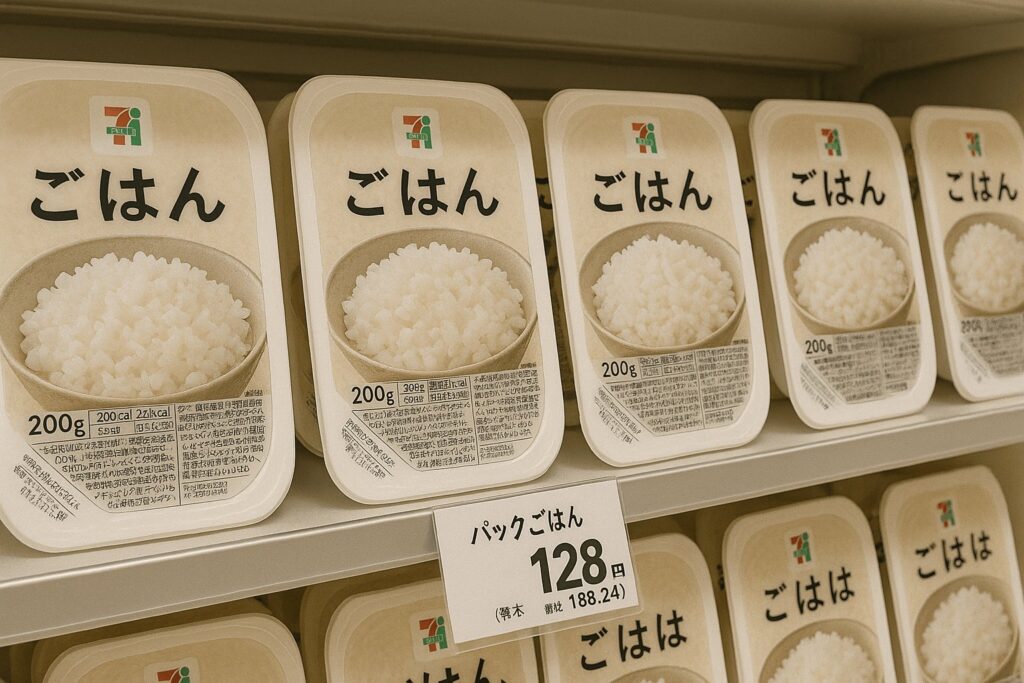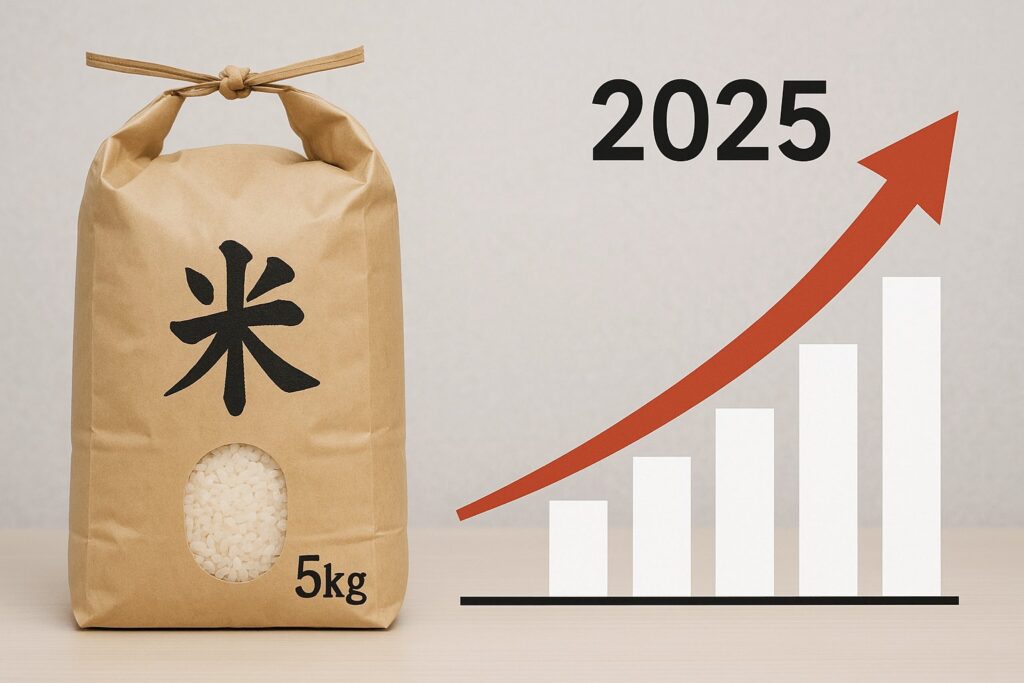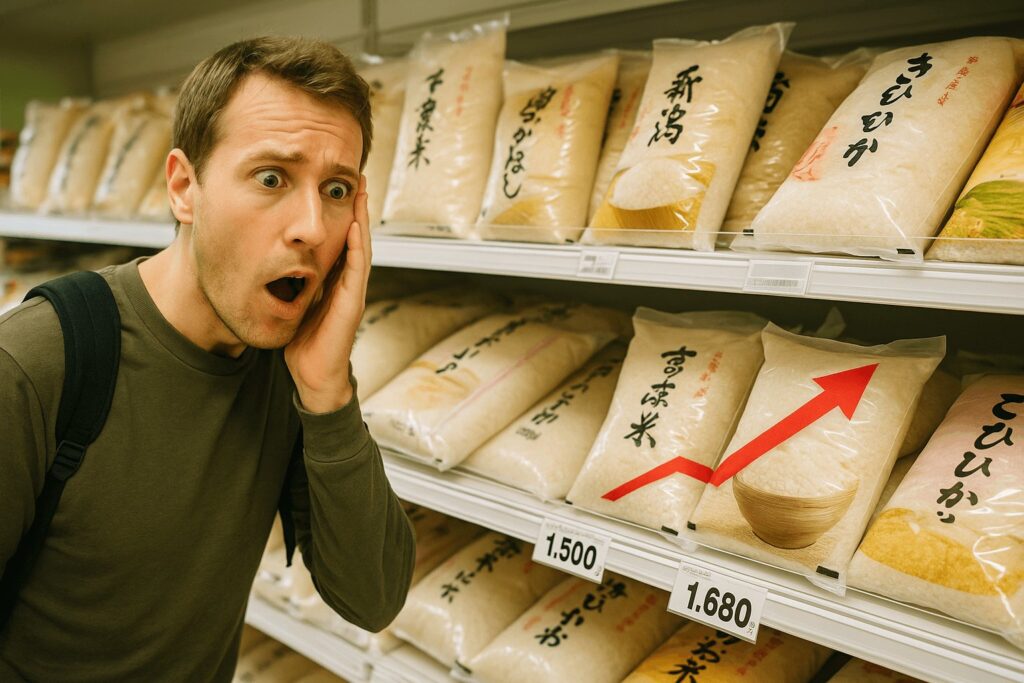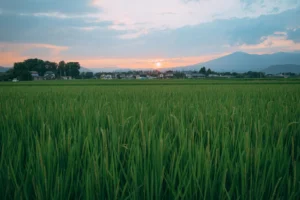Last Updated on 2025年7月31日 by Kenty
Rice is a staple of Japanese cuisine — from sushi to onigiri to steaming bowls of white rice. But in recent years, many people in Japan (and abroad) have noticed something strange: rice prices are rising.
In this article, we’ll explore why Japanese rice is getting more expensive in 2025, what the government is doing about it, and how it might affect your travel or daily life in Japan.
🍚 How Much Has Rice Price Increased in Japan?

If you’ve lived in Japan or visited convenience stores recently, you may have noticed:
- Packaged microwavable rice that used to cost around ¥100 now costs ¥160–170.
- Even basic supermarket rice is gradually becoming more expensive.
📌 For example:
In 2023, a 5kg bag of rice might have cost ¥1,800. In 2025, it’s often closer to ¥2,400–¥2,600.
🔍 Why Are Rice Prices Rising in Japan?

There are several key reasons behind this trend:
1. Climate Change and Extreme Weather
- Unpredictable weather, including heavy rain, droughts, and typhoons, affects rice harvests.
- Warmer temperatures have disrupted planting and harvesting schedules.
2. Decline in Rice Farmers
- Japan’s farming population is aging.
- Fewer young people are entering agriculture, leading to less domestic production.
- Farmland is being abandoned or converted to other uses.
3. Rising Costs of Fertilizers and Fuel
- Global inflation and import costs have made agricultural inputs more expensive.
- Japanese farmers now pay more to grow and ship rice.
4. Increased Demand from Overseas
- Japanese rice is gaining popularity abroad (especially in Asia).
- Exports of premium Japanese rice (like Koshihikari) are rising — tightening domestic supply.
🇯🇵 What Is the Japanese Government Doing?

To address the rice shortage and rising prices, the Japanese government has launched several initiatives:
- ✅ Support programs for younger farmers
- ✅ Subsidies for sustainable rice farming
- ✅ Investment in automated farming and AI-based agriculture
- ✅ Expanding rice imports in emergency cases
Still, these policies take time — so short-term price increases may continue through 2025.
🍱 How This Affects You (as a Visitor or Resident)

If you’re visiting Japan:
- Expect to pay slightly more for rice-based meals at restaurants and bento shops.
- Packaged rice at convenience stores may cost ¥150–180 instead of ¥100.
If you live in Japan:
- Budgeting for groceries might get tougher — especially for students or single residents.
- Buying larger rice bags (10kg) or shopping at discount stores may help save money.
🧑🍳 Rice Alternatives in Japan
If you’re looking to mix things up (or save money), try:
- 🥔 Udon or Soba: Often cheaper than rice dishes
- 🍞 Japanese bread (shokupan): Popular and affordable breakfast option
- 🍛 Curry with less rice: Many chains now offer “small rice” options
✨ Final Thoughts
Rice may seem like a simple ingredient, but in Japan, it’s deeply connected to culture, tradition, and daily life. While prices are rising due to climate and economic shifts, it’s still possible to enjoy delicious Japanese rice — just with a bit more awareness and budgeting.
If you’re planning a trip or living in Japan in 2025, now you know why your favorite onigiri costs a little more than before!
👉 Related Articles
- Japanese Convenience Stores – What Surprises Foreigners Most
- [Best Budget Meals in Tokyo (Coming Soon)]
- How to Eat Sushi Properly – Etiquette Guide





